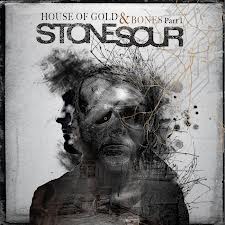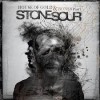 Do you remember where you were when you heard Megadeth’s Peace Sells…But Who’s Buying or Rust in Peace, Sabbat’s Dreamweaver (Reflections of Our Yesterdays) or Skyclad’s Wayward Sons of Mother Earth for the first time? The temptation to add the latest album by Stone Sour, House of Gold and Bones Part 1, to these premium and top rated albums of the genre should not take long, all of the first listen will be enough to confirm that perhaps for the first time the band have created something intrinsically and artistically brilliant.
Do you remember where you were when you heard Megadeth’s Peace Sells…But Who’s Buying or Rust in Peace, Sabbat’s Dreamweaver (Reflections of Our Yesterdays) or Skyclad’s Wayward Sons of Mother Earth for the first time? The temptation to add the latest album by Stone Sour, House of Gold and Bones Part 1, to these premium and top rated albums of the genre should not take long, all of the first listen will be enough to confirm that perhaps for the first time the band have created something intrinsically and artistically brilliant.
Flitting between two bands can be a strain on the psyche but when you’re Corey Taylor and one of those groups is the critically rated Stone Sour then it seems to be that no matter what goes on in your personal life, the music flows and the albums just get bigger and better with every step. Such is the music behind House of Gold and Bones Part 1.
Not only is it brash and bold, it is demure, scamp-like and heart rendering. It fulfils every requirement as a bona fide addition to the Thrash pantheon but it also showcases the group’s ability to be just on the side of gentle when required, certainly when it accentuates the message that Corey Taylor gets across.
This fourth studio album also touches on the idea of the Progressive with an underlying theme woven throughout each song and this story plays out so well that the detractors of Thrash as critically endorsed genre would even enjoy the tracks laid down by Josh Rand, Roy Mayorga, Corey Taylor and his Slipknot band mate Jim Root.
This is music that is at one time comfortable in the realms of Thrash but also has the demeanour of just simple great rock guitar riffs and personality stamped all the way through it. Songs such as A Rumor of Skin, Tired, RU486 and Influence of a Drowsy God will burn through your soul and take hold of the inner Metal fan.
House of Gold and Bones Part 1 is not just Stone Sour’s finest moment but it is quite possibly the best Thrash/Metal album of the year.
There is no other way to describe this album but as spectacular.
Ian D. Hall
